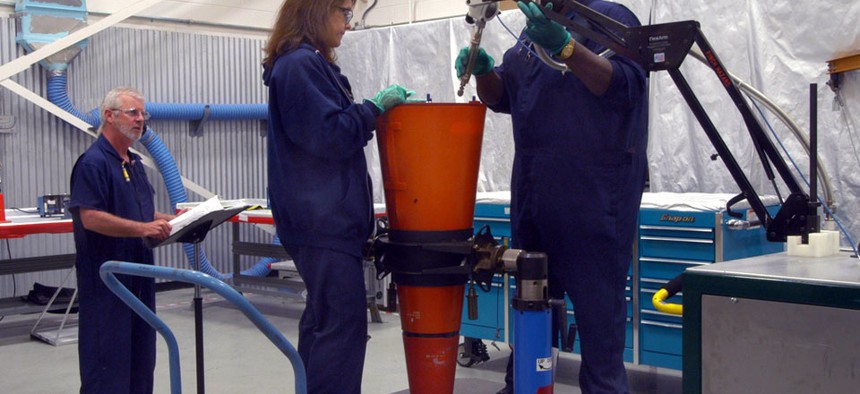
Technicians perform maintenance on W-76 nuclear warhead. National Nuclear Security Administration
Watchdog: U.S. Struggles to Track Nuclear-Arms Design Records
Missing data exposes the U.S. nuclear arsenal to an array of unnecessary costs and risks
An Energy Department investigator has lashed nuclear-arms offices for failing to keep a detailed paper trail of how they build and care for each bomb.
The National Nuclear Security Administration has not consistently tracked each of the thousands of nuclear weapons under its charge with a comprehensive file of "drawings, specifications, engineering authorizations, manufacturing records" and other documents from its assembly and maintenance, says a new report by the Energy Department's inspector general.
The missing data exposes the U.S. nuclear arsenal to an array of unnecessary costs and risks, Gregory Friedman said his team had found.
In one case, officials incorrectly approved two components to be added to a variant of the W-76 nuclear warhead. The error, they said, cost between $20 million and $25 million, and held up preparation of new parts by an extra 12 months.
The United States never "treated the maintenance of original nuclear weapons [records] as a priority" during or after the Cold War, according to the March 26 assessment. The auditors argued, though, that "recapturing the department's original nuclear weapons data in a configurable format can potentially save tens of millions of dollars."
The report also warns that lax controls on the nation's nuclear-arms records left an opening for possible saboteurs to tamper with arms designs.
In a possible violation of Energy Department rules, Los Alamos National Laboratory granted about 30 design personnel access to sensitive design information, "regardless of whether they were assigned to a nuclear-weapon project," auditors wrote.
According to the New Mexico facility's administrators, restricting the information further would not help security, and "they believed that their internal processes were more efficient."
Energy Department officials agreed with the investigators' calls for record-keeping updates.
"Upgrade requirements continue to be identified and an acquisition strategy will be determined in [fiscal year] 2015," the report states.






